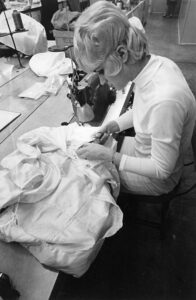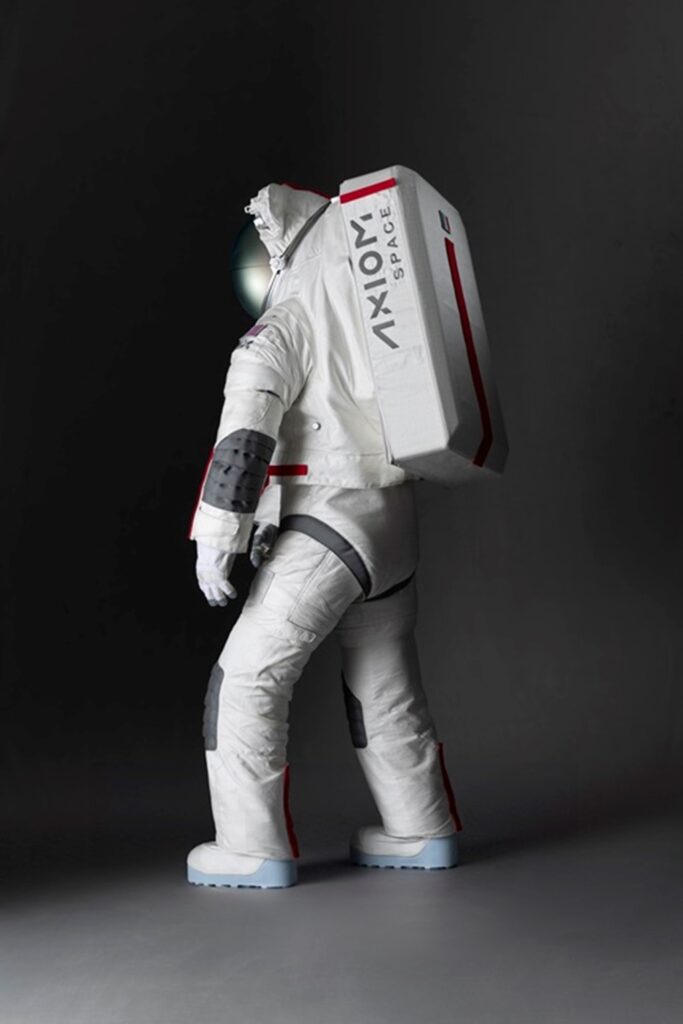
When we think of space exploration, images of cutting-edge technology, towering rockets, and scientific breakthroughs dominate our imagination. Yet, one of the most fascinating aspects of NASA’s history lies in a more unexpected realm—fashion and textiles. From the early days of space travel in the 1960s to today’s missions beyond Earth’s orbit, NASA has turned to unexpected partners to craft the spacesuits that protect astronauts from the harsh conditions of space. Surprisingly, these unifications have ranged from Playtex, a brand known for manufacturing bras and girdles, to Prada, an iconic couture house celebrated for high-end fashion.
This unlikely blend of aerospace engineering and fashion design underscores the importance of innovation across industries. Spacesuits, after all, are not just about style; they require precision, durability, and adaptability, qualities that fashion brands have mastered over decades.
The Early Years: Playtex’s Revolutionary Role in Spacesuit Design
In the 1960s, as the United States was locked in a heated space race with the Soviet Union, NASA faced an immense challenge—designing a spacesuit that could withstand the extreme conditions of space while allowing astronauts the mobility and comfort needed for their historic missions. Initially, the aerospace industry turned to traditional military contractors, but their designs lacked the flexibility required for human movement in zero gravity.
Enter Playtex, a company primarily known for creating women’s undergarments. Playtex’s expertise in elastic materials, stitching techniques, and ergonomic design made them an unconventional yet highly effective choice for the job.
The company’s division, known as the International Latex Corporation (ILC), won the contract to develop the Apollo spacesuit. Using their knowledge of multi-layered fabrics and precision sewing, Playtex engineers constructed a suit that provided:
•Flexibility: Using a combination of latex, nylon, and Teflon, the suit allowed astronauts to move more freely than in previous bulky prototypes.
•Pressure Retention: The suit maintained the necessary pressure to sustain human life in the vacuum of space.
•Thermal Insulation: It protected astronauts from extreme temperature fluctuations, ranging from -250°F to 250°F.
The result was the iconic A7L spacesuit, famously worn by Neil Armstrong and Buzz Aldrin during the historic Apollo 11 moon landing in 1969. The Playtex-designed suit demonstrated how expertise from the fashion industry could directly contribute to human survival in space—a surprising yet triumphant collaboration that shaped the future of space exploration.
The Evolution of Spacesuits: From Apollo to Artemis
Following Playtex’s success in crafting the Apollo-era spacesuits, NASA continued refining their designs to meet the demands of increasingly ambitious missions. The subsequent Shuttle-era suits, known as the Extravehicular Mobility Unit (EMU), were bulkier and provided better protection for extended spacewalks in orbit. These suits were developed by aerospace contractors with a greater focus on modular design, allowing components to be swapped out and upgraded as technology improved.
However, as NASA sets its sights on returning to the Moon under the Artemis program, spacesuit design has once again taken center stage. The Artemis missions will require suits that offer enhanced mobility for lunar exploration, protection against lunar dust, and the ability to support both male and female astronauts effectively.
In line with these needs, NASA has embraced modern fashion and textile innovation, leading to a surprising partnership with luxury fashion house Prada.
Prada’s Foray into Spacesuit Design: Fashion Meets Function
In 2023, NASA announced an unexpected partnership with Prada, entrusting the Italian fashion giant with designing elements of the Artemis spacesuit in collaboration with aerospace company Axiom Space. Prada’s reputation for pioneering materials and meticulous craftsmanship made it a fitting partner for this ambitious venture.
The new suits, set to be worn by astronauts exploring the Moon’s surface in the coming years, will incorporate:
•Advanced Materials: Prada’s experience in working with innovative fabrics such as nylon, Kevlar, and carbon fiber composites will help create suits that are lightweight yet incredibly durable.
•Enhanced Mobility: Drawing from its expertise in ergonomic design, Prada will introduce flexible components that enable astronauts to move more naturally on lunar terrain.
•Stylish Practicality: While aesthetics may seem secondary in space travel, a well-designed suit can boost astronaut morale and comfort during long-duration missions.
Prada’s involvement in NASA’s next-generation spacesuits represents a fusion of luxury fashion and high-tech engineering, proving that the skills required for crafting haute couture garments can contribute meaningfully to humanity’s exploration of space.
The Science Behind Spacesuits: A Complex Balancing Act
Designing a spacesuit is an intricate process that requires balancing multiple engineering disciplines to achieve optimal performance. A spacesuit must act as a miniature spacecraft, offering protection, life support, and mobility all in one. Some of the core functions include:
Pressure Regulation: Spacesuits must maintain internal pressure to prevent bodily fluids from boiling in the vacuum of space.
Thermal Control: Temperatures in space can range from extreme heat to freezing cold. Multi-layered insulation and thermal control systems help regulate body temperature.
Radiation Shielding: Space exposure poses radiation risks, requiring materials that provide adequate shielding.
Oxygen Supply and CO2 Removal: The suit provides breathable air while removing excess carbon dioxide.
Communication Systems: Integrated communication allows astronauts to stay connected with mission control.
Dexterity and Mobility: Suit joints and materials must allow astronauts to move freely while performing complex tasks.
Each of these elements requires materials that are lightweight yet resilient—qualities that brands like Playtex and Prada are adept at incorporating into their designs.
Looking to the Future: What Lies Ahead for Spacesuit Innovation
As space exploration expands beyond the Moon to Mars and beyond, the demand for more versatile, durable, and lightweight spacesuits will only increase. Future spacesuits will likely incorporate:
•Smart Fabrics: Sensors embedded in fabrics to monitor astronaut health and environmental conditions in real time.
•3D Printing: Custom-fit components created on-demand using additive manufacturing techniques.
•Self-Healing Materials: Advanced materials that can repair minor damage autonomously, enhancing the suit’s longevity.
•Modular Components: Allowing astronauts to swap and replace suit elements depending on mission requirements.
NASA’s continued partnerships with both traditional aerospace firms and cutting-edge fashion houses demonstrate an understanding that innovation often emerges from the intersection of disciplines.
The Broader Implications of Fashion-Tech Collaborations
The connection between fashion brands and space agencies has broader implications beyond just spacesuits. These partnerships highlight the importance of cross-industry collaboration and the potential for fashion innovation to influence other high-tech sectors such as military applications, medical wearables, and sportswear.
For instance, materials developed for spacesuits—such as moisture-wicking fabrics and temperature-regulating materials—have found their way into everyday clothing, proving that the benefits of space-age technology extend far beyond the confines of NASA’s missions.
From the Runway to the Stars
The story of NASA’s spacesuit collaborations, from Playtex to Prada, is a testament to the power of innovation and cross-disciplinary ingenuity. What began as an unexpected partnership with a lingerie company in the 1960s has evolved into collaborations with some of the most prestigious fashion houses of today.
As humanity embarks on a new era of space exploration, the lessons learned from these surprising alliances serve as a reminder that the most effective solutions often come from the most unexpected places. Whether it’s the flexibility of a Playtex girdle or the high-tech craftsmanship of a Prada jacket, the common threads that connect fashion and space travel continue to push the boundaries of what’s possible—both on Earth and beyond.
So next time you see an astronaut stepping onto the surface of the Moon or preparing for a journey to Mars, remember that behind every spacesuit lies a fascinating history of connection, innovation, and, yes, a touch of style.
No comments yet.








